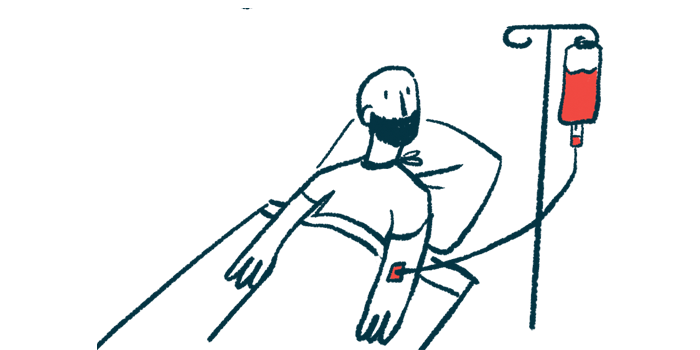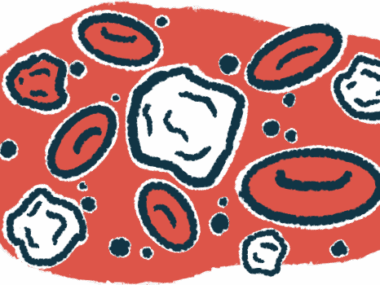Treatment before surgery slows PDAC disease progression: Study
Survival extended, recurrence reduced, real-world data show
Written by |

Neoadjuvant therapy, or treatment to shrink tumors before the surgery to remove them, delayed disease progression, reduced recurrence, and extended survival in people with pancreatic ductal adenocarcinoma (PDAC), according to a real-world study.
“These findings support the effectiveness of neoadjuvant therapy in improving treatment outcomes for PDAC patients in real-world settings,” the researchers wrote in the study, “Long-Term Outcomes of Neoadjuvant Therapy Versus Upfront Surgery for Resectable Pancreatic Ductal Adenocarcinoma,” published in Cancer Medicine.
PDAC is the most common type of pancreatic cancer, accounting for more than 90% of cases. This type of cancer starts in the ducts of the pancreas, the tubes extending from the pancreas that supply enzymes to aid digestion.
At the time of diagnosis, however, about four in five patients are not eligible for curative surgery to remove the pancreatic tumors. Even among those who undergo surgery, the recurrence rate reaches 80% within two years.
Neoadjuvant treatment has emerged as a strategy to help reduce recurrence rates after surgery. It involves treatment such as chemotherapy, radiation, chemotherapy and radiotherapy together (chemoradiotherapy), or hormone therapy, to shrink a tumor.
Disease progression with, without therapy
A study by researchers at the Yonsei University College of Medicine in South Korea compared the outcomes of PDAC surgery with and without neoadjuvant therapy. The team confirmed that adding neoadjuvant therapy doubled progression-free survival (PFS), the length of time a patient lives with the disease but does not get worse.
Because the study’s follow-up period was limited to about three years, the team has now reported the long-term impact of neoadjuvant therapy after PDAC surgery.
Based on a review of medical records, 167 eligible PDAC patients had upfront surgery without neoadjuvant therapy. A total of 35 underwent neoadjuvant treatment. Of those, 20 (57%) received chemotherapy and 15 (43%) had chemoradiotherapy. To reduce the risk of recurrence, a similar proportion of patients in each group underwent adjuvant chemotherapy after surgery: 81.4% for surgery alone and 85.7% with neoadjuvant therapy.
The researchers then matched patients in each group based on factors that may influence outcomes, including age, sex, and clinical stages T and N. T stage refers to the size of the tumor and any spread into nearby tissue, and N stage describes any spread into nearby lymph nodes. The 35 patients in the neoadjuvant group were matched to 105 of the upfront surgery patients.
As previously found, the neoadjuvant therapy group showed significant improvements in several immediate surgical outcomes compared with the matched upfront surgery group. This included smaller tumor size (22 mm vs. 28 mm), improved T stage, and a higher R0 resection rate (74.3% vs. 49.5%), meaning more patients with no signs of residual cancer after surgery. Improvement in the N stage and fewer positive lymph nodes also favored neoadjuvant therapy over upfront surgery.
In the updated survival analysis, patients in the upfront surgery group were followed for up to 53.5 months, or 4.5 years, and patients in the neoadjuvant group for up to 72.4 months, or six years. During follow-up, 66 patients died: 59 (35.3%) after upfront surgery and seven (20%) in the neoadjuvant therapy group.
Overall, 75% of patients in the neoadjuvant therapy group were still alive at 72.7 months, or six years, compared with 28.3 months, or about two years, in the upfront surgery group. The biggest difference in survival rates was seen at five years, with neoadjuvant therapy significantly outperforming upfront surgery (84.2% vs. 54.7%), representing a 30% improvement.
Most patients in the upfront surgery group experienced a recurrence, compared with about half in the neoadjuvant therapy group (81.4% vs. 54.3%). Moreover, the neoadjuvant therapy more than doubled PFS versus upfront surgery (median 29.6 vs. 13.2 months), representing a nearly 60% improvement.
“Our study demonstrates the potential benefits of neoadjuvant therapy for resectable PDAC,” the researchers wrote. “The improved surgical outcomes, delayed disease progression, and extended survival underscore the promise of this treatment approach.”







